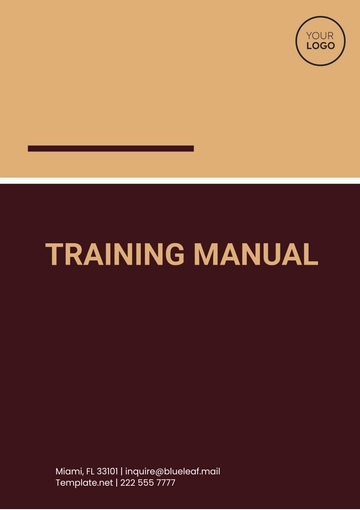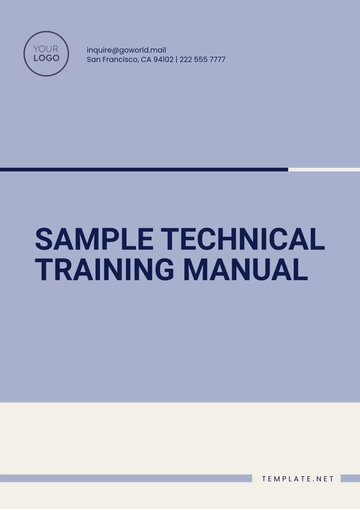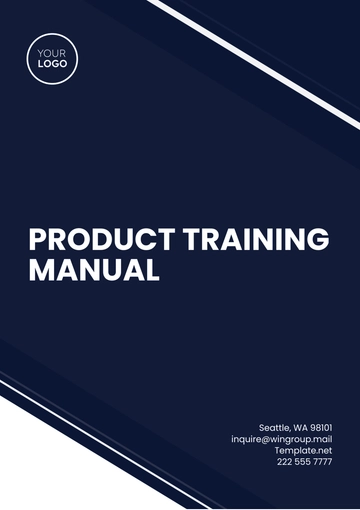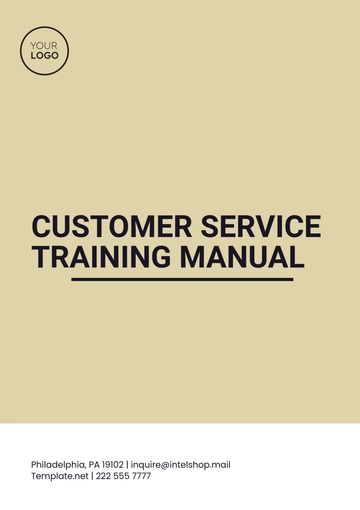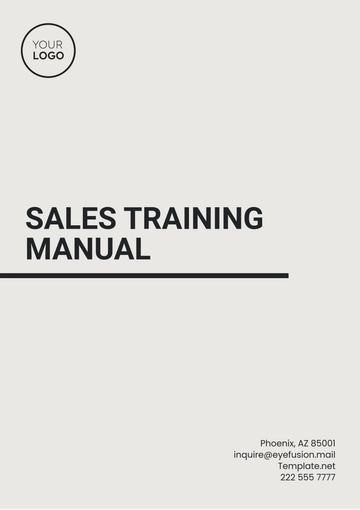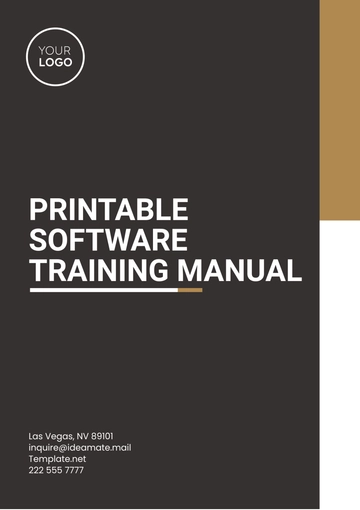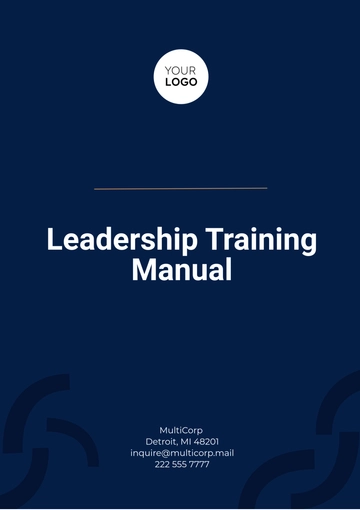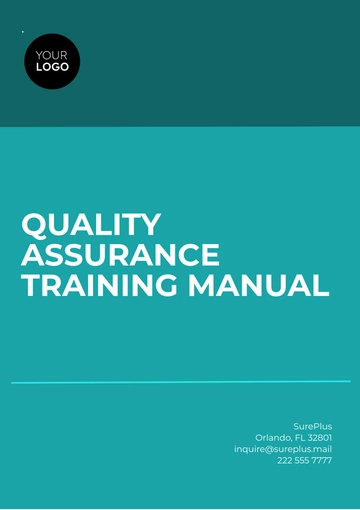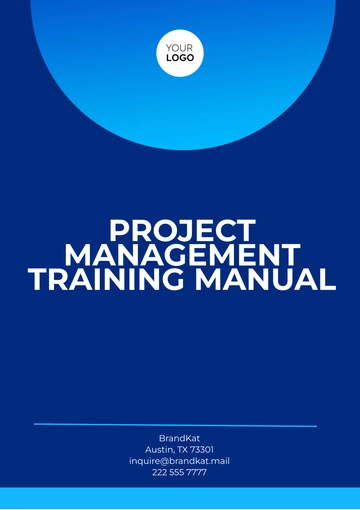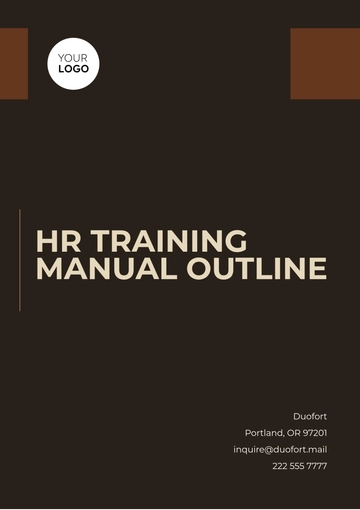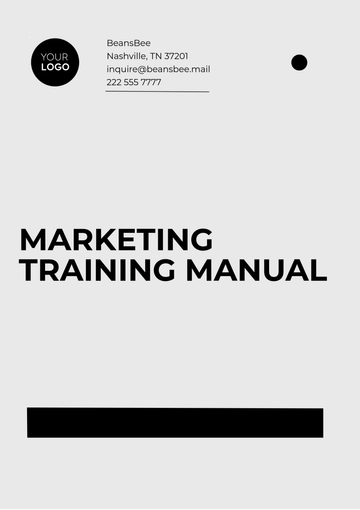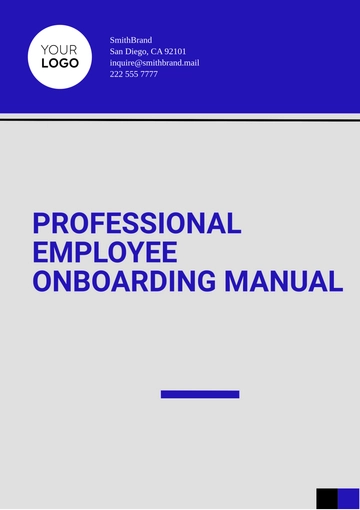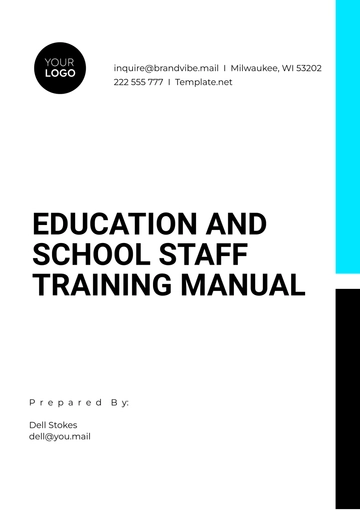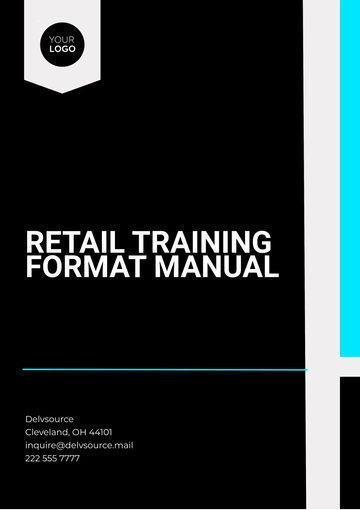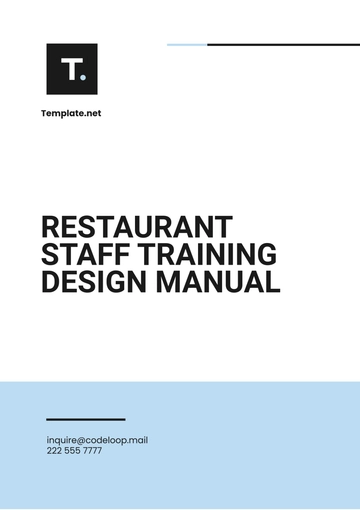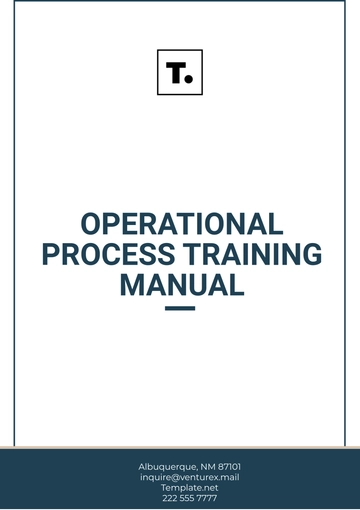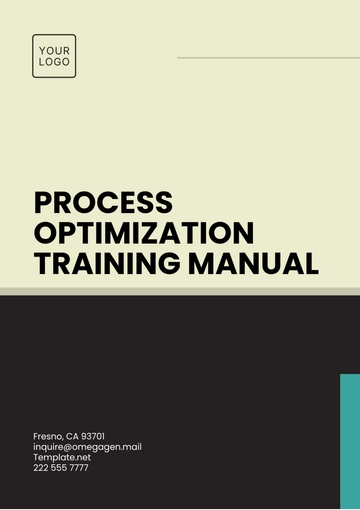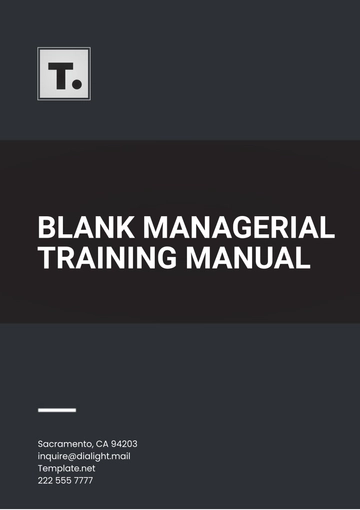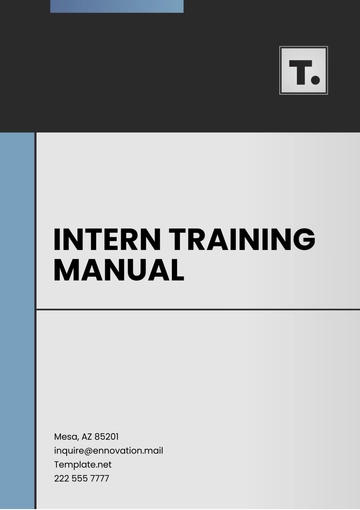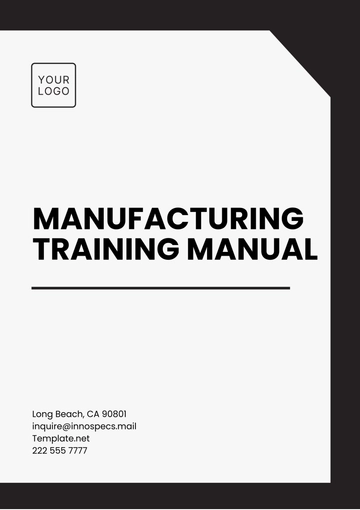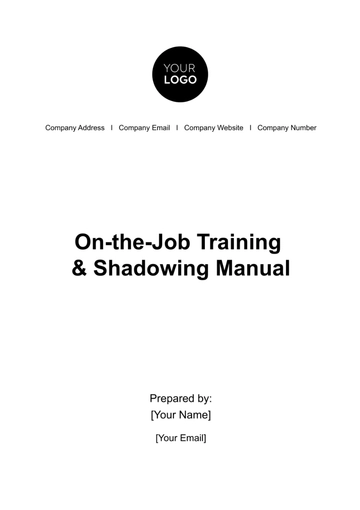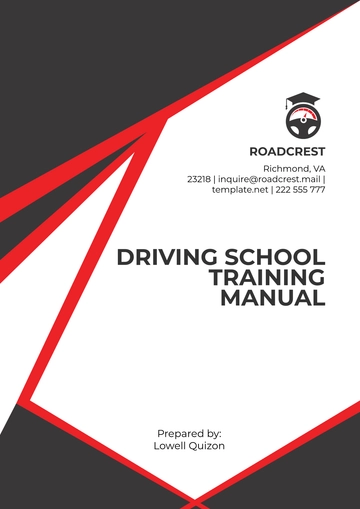Free Manager Training Manual
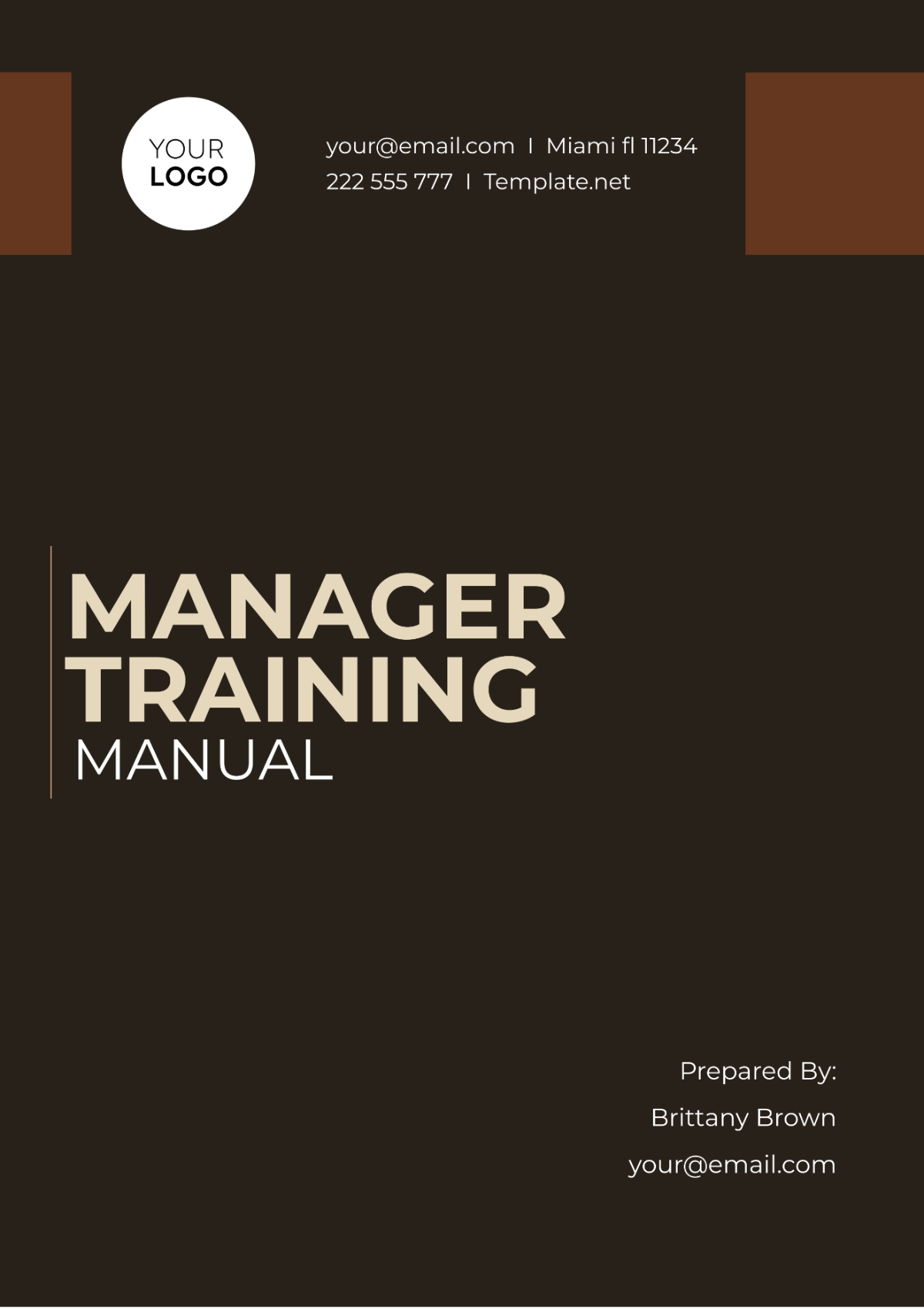
Name | [YOUR NAME] |
|---|---|
Company | [YOUR COMPANY NAME] |
Department | [YOUR DEPARTMENT] |
Date | [DATE] |
I. Introduction
Welcome to the [YOUR COMPANY NAME] Manager Training Manual, designed to equip you with the essential knowledge and skills to excel in your managerial role. As a manager within our organization, you play a pivotal role in driving success, fostering a positive work environment, and ensuring the achievement of our collective goals. This manual serves as your comprehensive guide to understanding our company's policies, procedures, and best practices in management.
[YOUR COMPANY NAME] is committed to providing you with the necessary tools and resources to succeed in your managerial journey. This manual is structured to cover various aspects of managerial responsibilities, including but not limited to leadership, communication, employee development, and performance management. By familiarizing yourself with the content within this manual, you will be better equipped to lead your team effectively and contribute to the overall success of our organization.
II. Getting Started
A. About [YOUR COMPANY NAME]
[YOUR COMPANY NAME] is a leading [INDUSTRY] company dedicated to [KEY OBJECTIVES]. Since [YEAR], we have been at the forefront of innovation, delivering [PRODUCTS] to [TARGET]. Our commitment to excellence and customer satisfaction sets us apart in the industry.
B. Managerial Role Overview
As a manager at [YOUR COMPANY NAME], you are entrusted with several key responsibilities:
Leading and motivating your team to achieve performance targets.
Facilitating effective communication and collaboration within your team and across departments.
Identifying and developing talent within your team through coaching and mentoring.
Ensuring compliance with company policies, procedures, and relevant regulations.
Collaborating with senior management to drive strategic initiatives and organizational growth.
C. How to Use This Manual
This manual is designed to be user-friendly and easily navigable. Here are some tips on how to make the most of this resource:
Read Carefully: Take the time to read each section thoroughly to gain a comprehensive understanding of your managerial responsibilities.
Refer Back Regularly: Use this manual as a reference guide whenever you encounter new situations or challenges in your role.
Seek Clarification: If you have any questions or need further clarification on any topic covered in this manual, don't hesitate to reach out to your [HR Department] or [Immediate Supervisor].
Provide Feedback: Your feedback is valuable to us. If you have suggestions for improving this manual or if there are topics you would like to see covered in more detail, please share them with us.
III. Leadership and Management Principles
A. Leadership Styles
Effective leadership is essential for guiding teams toward success. Understanding different leadership styles can help you adapt your approach to various situations and team dynamics. Here are some common leadership styles:
Autocratic Leadership: In this style, the leader makes decisions without consulting others, relying on their authority and control.
Democratic Leadership: This style involves seeking input from team members before making decisions, promoting collaboration and empowerment.
Transformational Leadership: Transformational leaders inspire and motivate their team members, encouraging them to achieve beyond expectations through vision and charisma.
Servant Leadership: Servant leaders prioritize the needs of their team members, focusing on serving and supporting them to achieve collective goals.
B. Effective Communication
Communication is the cornerstone of successful management. As a manager, you must master various communication techniques to convey information effectively, foster collaboration, and resolve conflicts. Here are some tips for improving communication:
Active Listening: Pay close attention to your team members' perspectives and concerns, demonstrating empathy and understanding.
Clarity and Conciseness: Clearly articulate your messages, avoiding ambiguity and unnecessary jargon.
Feedback Mechanisms: Establish regular feedback channels to encourage open communication and address any issues or concerns promptly.
Nonverbal Communication: Be mindful of your body language and facial expressions, as they can convey messages as effectively as words.
IV. Employee Development and Training
A. Performance Management
Performance management is a crucial aspect of managerial responsibility, involving the assessment and improvement of employee performance. Here are key components of effective performance management:
Goal Setting: Collaborate with your team members to establish clear, measurable goals aligned with organizational objectives.
Regular Feedback: Provide constructive feedback on performance, highlighting strengths and areas for improvement, and offering support and guidance.
Performance Reviews: Conduct regular performance reviews to assess progress toward goals, discuss achievements, and identify development opportunities.
Development Plans: Work with each team member to create individual development plans, outlining specific actions and resources to support their growth and advancement.
B. Training and Skill Development
Investing in employee training and skill development is essential for enhancing individual and team performance. Consider the following strategies to facilitate continuous learning and development:
Training Needs Assessment: Identify the skills and knowledge gaps within your team through comprehensive needs assessments.
Training Programs: Provide access to relevant training programs, workshops, and resources to address identified needs and support professional growth.
Cross-Training: Encourage cross-training opportunities to broaden employees' skills and perspectives, fostering versatility and adaptability within the team.
Mentorship and Coaching: Pair team members with mentors or coaches who can provide guidance, advice, and support in their professional development journey.
C. Career Pathing and Succession Planning
Supporting employees in their career progression and succession planning is crucial for talent retention and organizational continuity. Here are steps to facilitate career pathing and succession planning:
Career Conversations: Initiate regular discussions with team members about their career aspirations, interests, and development goals.
Identifying High Potentials: Identify high-potential employees within your team and provide opportunities for growth and advancement.
Succession Planning: Develop succession plans for key roles within the organization, identifying potential successors and implementing strategies to groom them for future leadership positions.
Professional Development Opportunities: Offer opportunities for employees to take on new challenges, projects, or roles that align with their career aspirations and contribute to their professional growth.
V. Policy and Compliance
A. Company Policies and Procedures
Familiarizing yourself and your team with [YOUR COMPANY NAME]'s policies and procedures is essential for ensuring compliance and maintaining a positive work environment. Here are some key policies and procedures you should be aware of:
Code of Conduct: Review and adhere to the company's code of conduct, which outlines expected behaviors, ethical standards, and guidelines for professional conduct.
Equal Employment Opportunity: Understand and promote equal employment opportunity principles, ensuring fair treatment and opportunities for all employees regardless of race, gender, age, or other protected characteristics.
Safety and Security: Comply with safety and security policies to maintain a safe work environment for all employees, including protocols for emergency situations and hazard mitigation.
Confidentiality and Data Security: Safeguard sensitive information and data by following confidentiality and data security protocols, protecting the privacy and integrity of company and customer information.
B. Legal Compliance
As a manager, it's crucial to ensure that your actions and decisions align with legal requirements and regulations governing your industry and jurisdiction. Here are some areas of legal compliance to consider:
Employment Laws: Familiarize yourself with relevant employment laws and regulations governing areas such as minimum wage, overtime pay, discrimination, harassment, and employee rights.
Labor Relations: Understand the rights of employees to organize and engage in collective bargaining, as well as your obligations as a manager in maintaining positive labor relations.
Health and Safety Regulations: Comply with health and safety regulations to provide a safe and healthy work environment, including workplace safety standards and regulations enforced by regulatory agencies.
Data Protection and Privacy Laws: Adhere to data protection and privacy laws governing the collection, use, and storage of personal and sensitive information, ensuring compliance with regulations such as the General Data Protection Regulation (GDPR) or the Health Insurance Portability and Accountability Act (HIPAA) where applicable.
VI. Conflict Resolution and Team Management
A. Understanding Conflict
Conflict is a natural part of any workplace, and as a manager, it's essential to address conflicts promptly and effectively to maintain a productive and harmonious work environment. Here are key steps in understanding and managing conflict:
Identify the Source: Determine the underlying causes of conflict, whether they stem from interpersonal differences, competing goals, or other factors.
Listen Actively: Encourage open communication and active listening among team members involved in the conflict, allowing each party to express their perspectives and concerns.
Seek Common Ground: Look for areas of agreement or shared interests among conflicting parties, facilitating compromise and resolution.
Resolve Conflicts Respectfully: Mediate conflicts impartially, focusing on finding mutually acceptable solutions while respecting the dignity and rights of all parties involved.
B. Team Dynamics and Collaboration
Building a cohesive and high-performing team requires fostering positive team dynamics and promoting collaboration. Here are strategies for enhancing team dynamics and collaboration:
Establish Team Norms: Define clear expectations and norms for behavior and communication within the team, promoting mutual respect, trust, and accountability.
Encourage Diversity and Inclusion: Embrace diversity and inclusion within your team, valuing different perspectives, backgrounds, and experiences, and leveraging them to drive innovation and creativity.
Facilitate Team-Building Activities: Organize team-building activities and exercises to foster camaraderie, trust, and collaboration among team members.
Promote Shared Goals: Align team members around common goals and objectives, emphasizing the importance of teamwork and collective success.
C. Performance Coaching and Development
As a manager, one of your primary responsibilities is to support the professional growth and development of your team members. Here are steps for providing effective performance coaching and development:
Set Clear Expectations: Establish clear performance expectations and objectives for each team member, ensuring alignment with organizational goals and priorities.
Provide Regular Feedback: Offer constructive feedback on performance, highlighting strengths and areas for improvement, and providing guidance and support for development.
Identify Development Opportunities: Identify opportunities for skill development and career advancement for each team member, offering resources, training, and mentorship to support their growth.
Monitor Progress and Celebrate Achievements: Track the progress of your team members' development goals, recognizing and celebrating their achievements and milestones along the way.
VII. Conclusion
Congratulations on completing the [YOUR COMPANY NAME] Manager Training Manual. You now have a solid foundation in managerial responsibilities, leadership, communication, and team management. Remember to continually seek opportunities for growth and support your team members' development. Your dedication and leadership will drive success for both you and [YOUR COMPANY NAME].
- 100% Customizable, free editor
- Access 1 Million+ Templates, photo’s & graphics
- Download or share as a template
- Click and replace photos, graphics, text, backgrounds
- Resize, crop, AI write & more
- Access advanced editor
Introducing the Manager Training Manual Template from Template.net. This comprehensive guide is fully editable and customizable to suit your organization's needs. Crafted with precision and user-friendly features, it's effortlessly editable in our Ai Editor Tool, ensuring seamless customization. Elevate your team's training experience with this essential resource.
